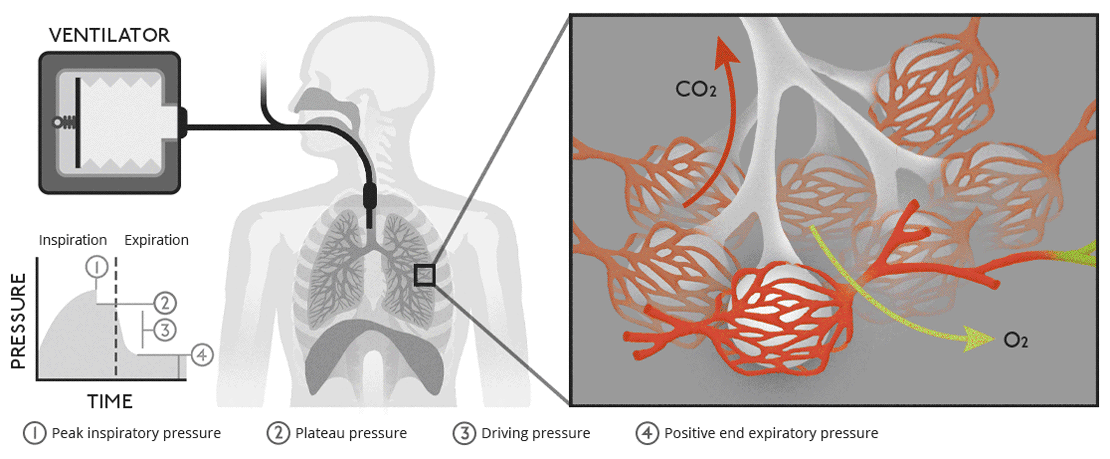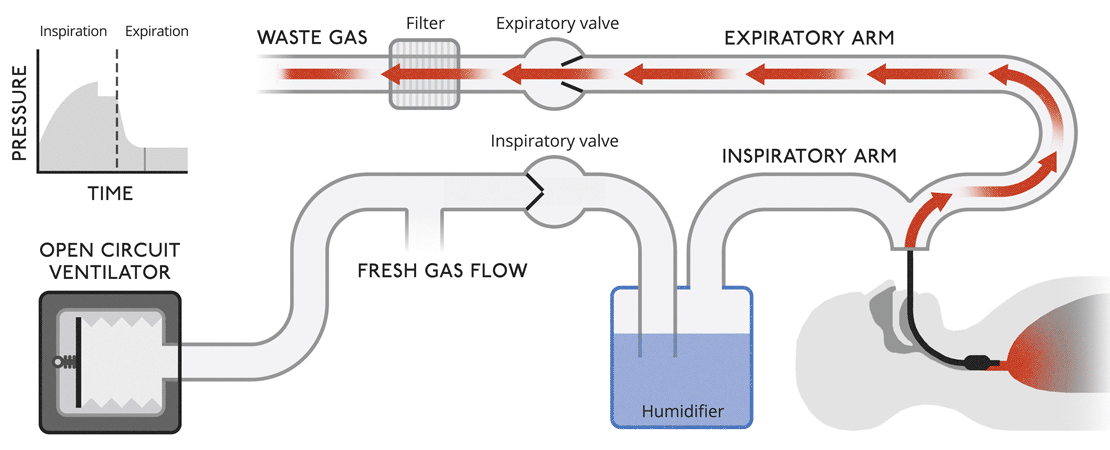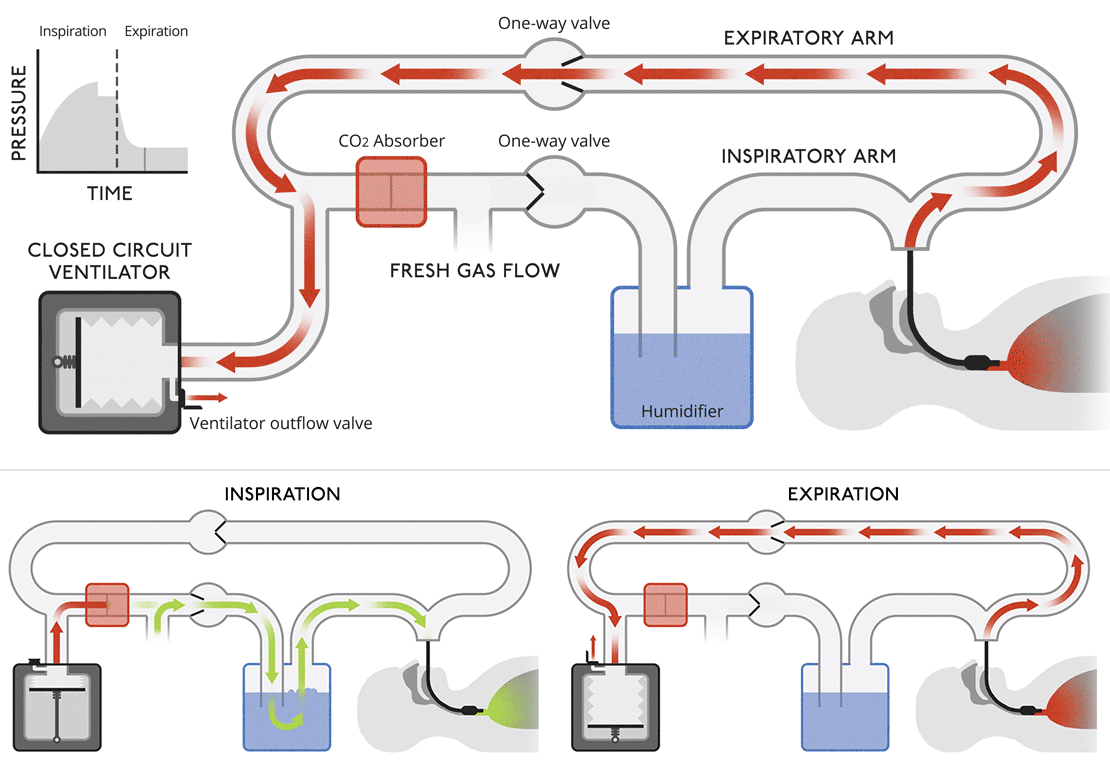Explaining ventilators for COVID-19
April 1 2020 · CoVent-19
Last week I collaborated with Dr. Sarah Low to explain ventilators in a series of animations. Sarah is an anesthesiology resident at Massachusetts General Hospital, and a leader of CoVent-19 - one of many efforts to address the ventilator shortage during the Covid-19 outbreak. The CoVent-19 organization is run by a team of thirteen medical doctors, including Sarah. Their goal is to teach engineers the basics of medical ventilation, in the hopes that new ventilation solutions can be engineered from existing equipment or repurposed supplies.
Please take a look at the CoVent-19 website for more information! I’m also sharing all of these ventilation graphics to the public domain, so you’re free to use them however you like . But please note that I only illustrated the simplified circuits that Sarah needed (this isn’t a comprehensive explanation of ventilators).
Biology of ventilationAir moves from our lungs into the bloodstream through tiny, air-filled sacs called alveoli. |

|
Open circuit ventilatorsThis is a very simple version of a ventilator where waste gas is expelled from the system without recycling. |

|
Closed circuit ventilatorsThis diagram is more like a modern medical ventilator. A CO |

|
Biology of ventilationAir moves from our lungs into the bloodstream through tiny, air-filled sacs called alveoli. 
|
Open circuit ventilatorsThis is a very simple version of a ventilator where waste gas is expelled from the system without recycling. 
|
Closed circuit ventilatorsThis diagram is more like a modern medical ventilator. A CO 
|